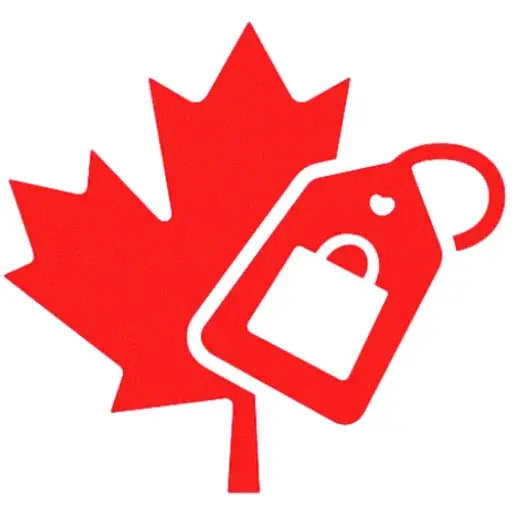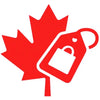
"MAPLE WASHED" OR ACTUALLY CANADIAN-OWNED?
HOW TO TELL IF A BRAND IS ACTUALLY CANADIAN-OWNED AND NOT JUST "MAPLE WASHED"
Reading Time: 2 Min 8 Sec
Not every brand with a red maple leaf is truly Canadian. Here's how to spot the real thing — and avoid the imposters!
You know the look — red and white packaging, maybe a moose or maple leaf, and a .ca domain slapped on for good measure.
It feels Canadian. But is it really?
These days, plenty of brands are “Canada-ish” — they look local, but behind the scenes they’re owned by foreign companies, with profits heading straight out of the country.
That’s where maple-washing (yes, it’s an actual thing!) comes in.
It’s when a brand uses Canadian imagery or messaging to seem local, without actually being Canadian-owned.
So how can you tell the difference?
1. Take a Close Look at the “About Us” Page
If a brand is truly Canadian-owned, it’ll usually say so proudly and clearly.
Look for keywords like:
- "Canadian-owned and operated"
- "Founded in [Canadian city]"
- "Family-owned Canadian business"
- "Based in [Canadian province]"
If the About page is vague or overly corporate (e.g. “Global leader in personal care”), that’s a red flag! (Not the Canadian kind!)
2. Look Into the Parent Company
Sometimes a Canadian brand has been bought out by a foreign parent company.
This doesn’t always mean the product is bad — but it does mean your dollars are leaving Canada.
A few quick ways to check:
Google: “Who owns [Brand Name]?”
Look at Wikipedia or business news
See if it’s listed on a foreign stock exchange
3. Don’t Be Fooled by a .ca Website
Having a Canadian domain doesn’t mean a brand is Canadian-owned — it just means they’re targeting Canadian customers.
Tip: Use it as a clue, not confirmation.

4. Watch for Red-and-White Disguises
Brands love to use Canadian icons — plaid, snow, “eh?”, and of course, the mighty maple leaf — to appear local.
But marketing ≠ ownership.
If it’s covered in Canadian imagery but offers zero transparency about where it’s based or who owns it, question it.
5. Look for “Made in Canada” or “Prepared in Canada” — But Know the Limits
Canadian-made and Canadian-owned aren’t always the same. Here’s what the labels actually mean:
- Made in Canada: The product was manufactured here — awesome!
- Prepared in Canada: It was assembled or packaged here — still good.
- Owned in Canada: The company profits stay here — our site's main focus.
Ideally? All three!
6. Use Curated Lists
Doing this research every time you shop can get exhausting.
That’s why we built True North Deals — to help you find legit Canadian-owned brands, plus deals, coupons, and more.
👉 Browse our growing list of Canadian-owned brands HERE
👉 Shop our Amazon Storefront HERE
👉 Shop Canadian Brands on Etsy HERE
👉 Shop Canadian Brands on Well.ca HERE
Find more brands and retailers listed here 👇
The Takeaway
Just because something looks Canadian doesn’t mean it is.
By shopping with truly Canadian-owned businesses, you're making sure your money supports local jobs, families, and the economy — not just clever marketing.

